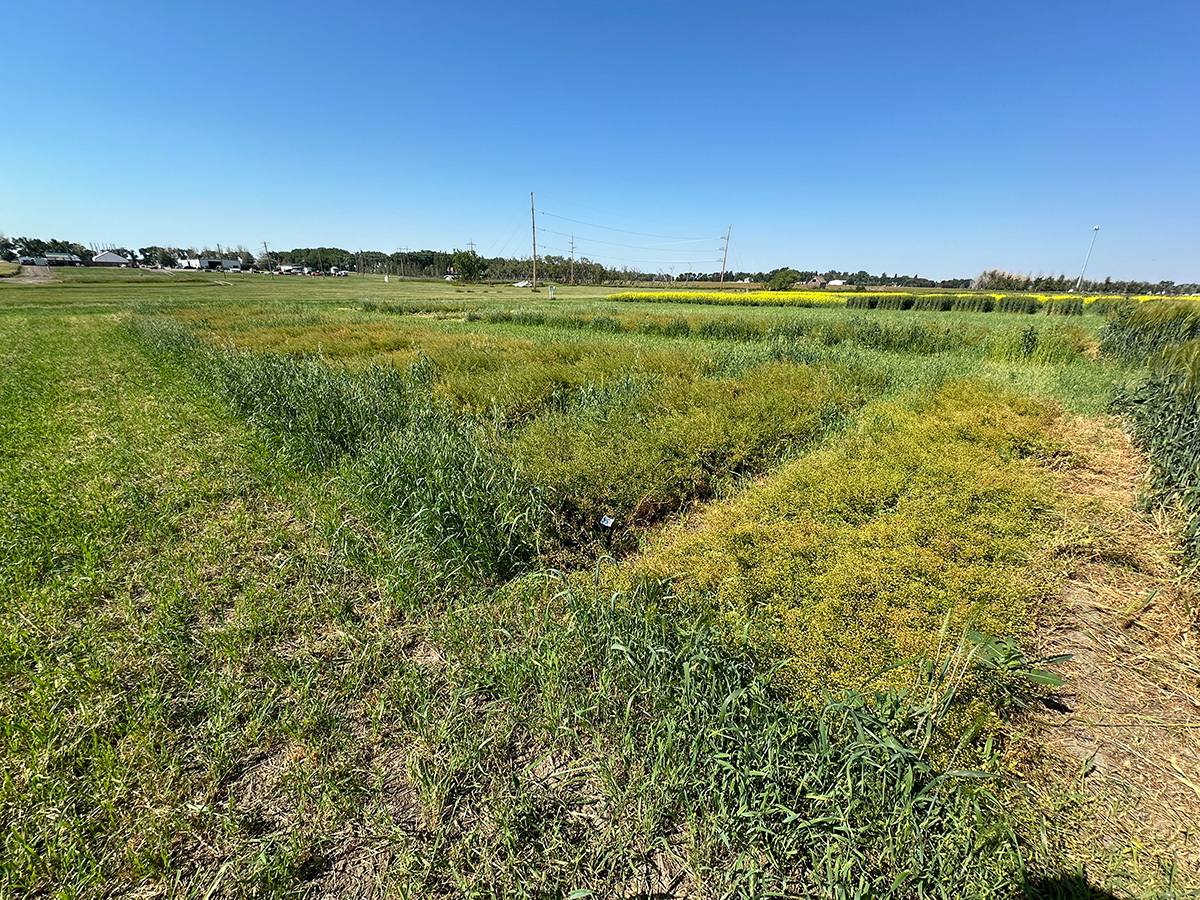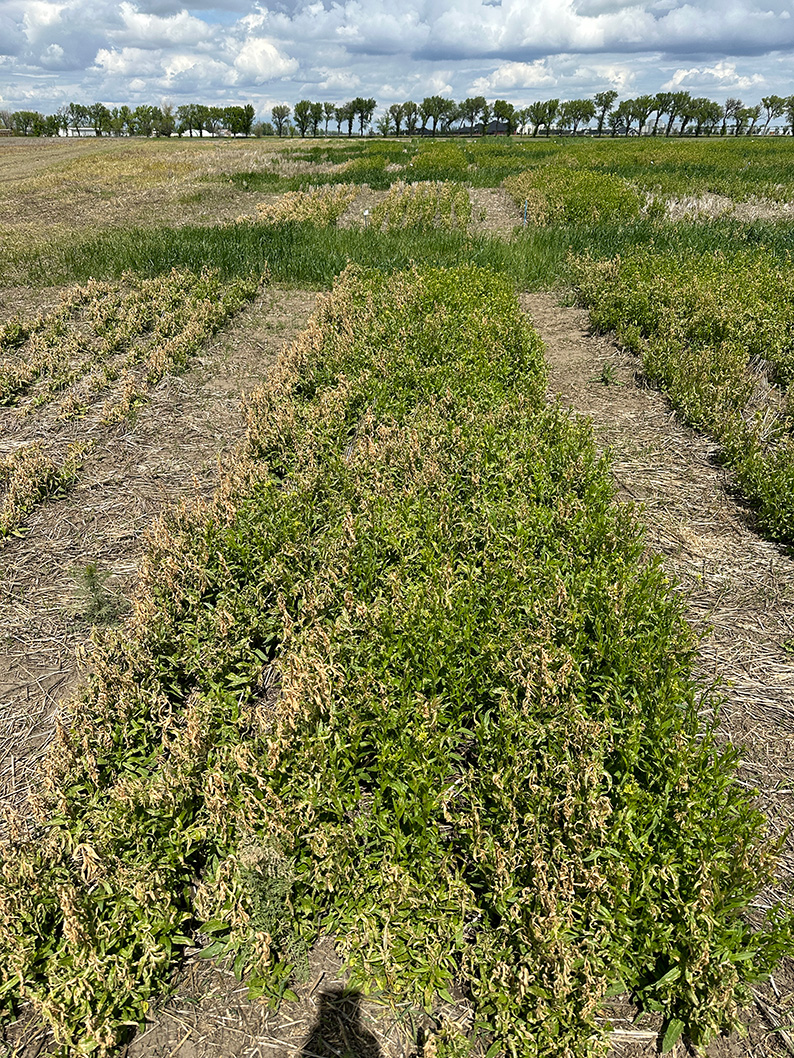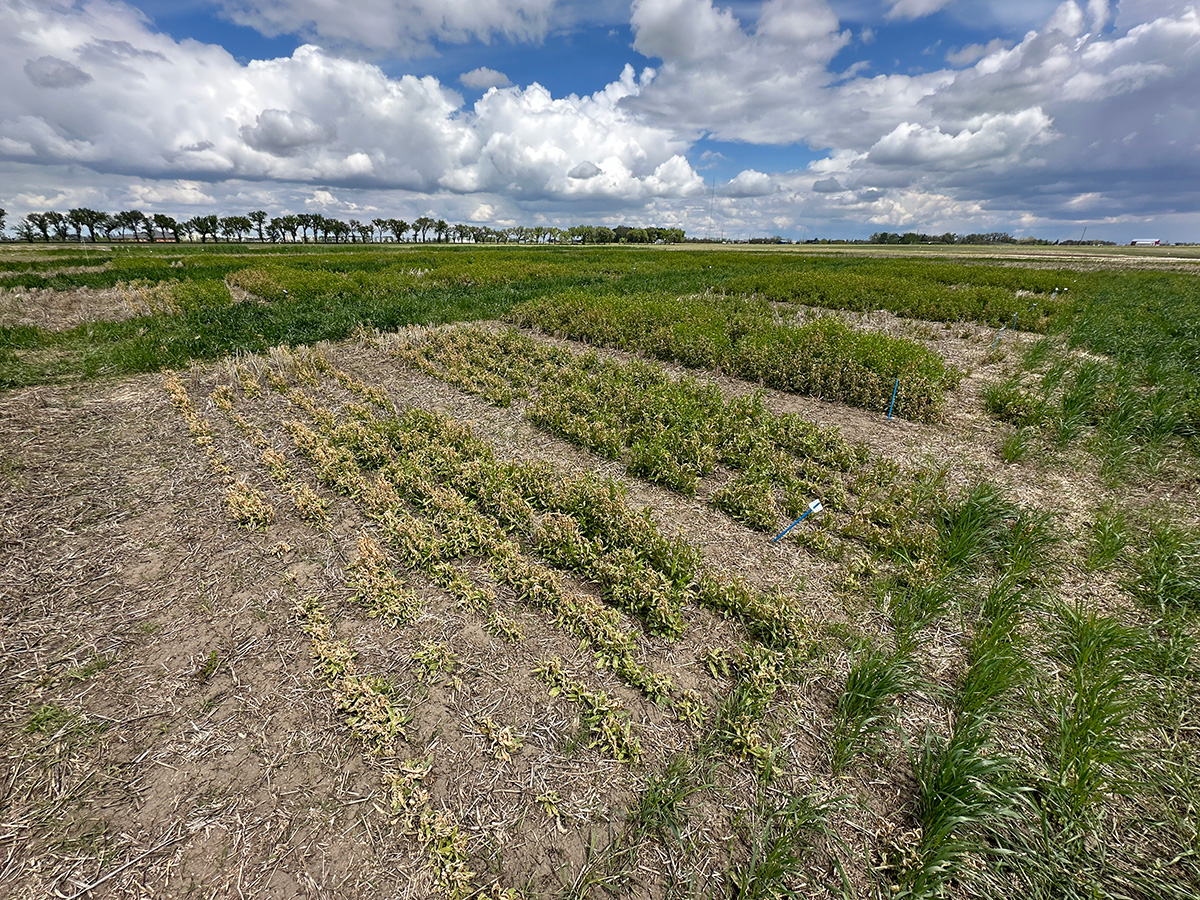Farming Smarter explores an emerging crop to possibly bring a new rotational option to producers interested in fall crops.
Opportunity for growth and soil conservation
Camelina offers farmers a flexible alternative to their regular rotations and could provide a multitude of benefits. Its deep roots assist in moving soil moisture while its canopy protects topsoil from wind erosion. Additionally, it has minimal disease crossover with more common crops in southern Alberta.
While its market presence pales in comparison to oats, barley, wheat, and canola, Trevor Deering, lead of Commercial Innovation at Farming Smarter, believes it merits consideration.
“As long as you have minimal trash, you don’t have to worry about what you’re seeding into with camelina,” says Deering.
Camelina tolerates drought well and interrupts pest and disease cycles that threaten common cash crops. The biggest threat to establishing camelina lies in its tiny seed size. With a well-prepared field, you eliminate the majority of threats towards the crop.
These traits encouraged our curiosity to explore its potential as an off-season cover crop.
Camelina emerges as potential overwinter pick
|
|
| A low seed rate, shallow depth camelina trial seeded in early September. While it had great emergence, spring frost dealt a heavy blow to the crop. |
We wrapped the first year of our study examining camelina as an over-winter cover crop at the end of July. Our goal is to evaluate the emergence and winter hardiness of camelina to identify benefits to fields and crop rotations.
The study aims to gather data on as many site years as possible from 2023 – 2026 to confidently inform growers across southern Alberta about the opportunity to include fall-seeded camelina in their rotations.
A late addition to our larger Saving Soils project funded by Weston Family Foundation and RBC’s Tech for Nature grant, this study evaluates the performance of fall-seeded camelina in dryland and irrigated fields.
In both environments, the camelina was seeded on two dates in September – an early date in the first week and a later date in the third week – at various rates and depths.
What started as a good year for winter crops with little variance in trials quickly changed with spring.
“We saw some difference between moisture locations, as the irrigated crops emerged nice and early. It looked beautiful going into the winter, as our early seeding dates developed big canopies that gave excellent soil coverage. What emerged from our later seeding dates was tiny,” Deering recalls.
Though, as a hard freeze would reveal, an early seeding date wasn’t as big of a benefit as initially thought.
“The crops were looking really nice, I thought they were going to be the best. Then we had a hard freeze that took out lots of the early crops. Everything that was seeded later survived much better,” Deering states.
Deering believes the seeding dates outlined in the project could yield an optimal window for survivability and canopy coverage. Going forward, special attention will be paid to how each crop stage responds to early spring weather.
Future considerations underway for rates and depths
The seeding depths element of the study yielded interesting observations that the team is eager to explore.
Regardless of seeding date, trials with more moisture exhibited better emergence when seeded shallow. Meanwhile, the opposite showed to be true when there was less moisture present in the soil.
Deering is excited to see if the trend continues to exist as the study continues.
Seeding rates didn’t demonstrate any noticeable differences, requiring the team to dig through the data to identify noteworthy observations.
Stay tuned for future updates on this project, including an upcoming project page!
|
|
 |
| A plot border and row of our camelina trials demonstrate the variety of crop responses with the chaotic winter and spring weather we experienced late-2023 and early-2024. Photo taken May 2024. | Come July, camelina plots began to improve dramatically as harvest approached. The project left plenty of data for our Commercial Innovation team to parse through! |





